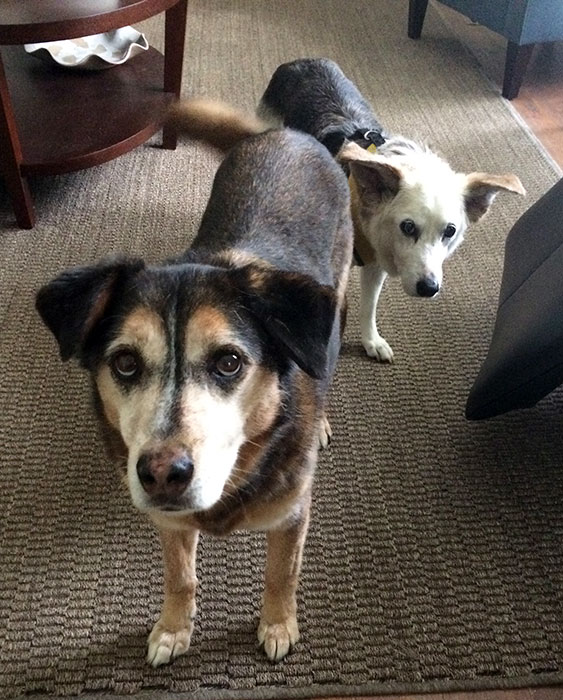
Most gardeners have a lot of plants in their houses. Some houseplants are poisonous to dogs, so it’s important to learn which ones are safe for your furry friends.
I learned the hard way that even if your dog has not chewed on any of your houseplants before or if he hasn’t done it in many years, he may take a bite one day. Read about what I had to do to save my dog after he chewed on my dumb cane plant.
Moving houseplants toxic to dogs up and out of reach of your pets can save their lives.
If your dog has eaten any of these toxic plants, call your veterinarian IMMEDIATELY.
Common Indoor Plants Poisonous to Dogs
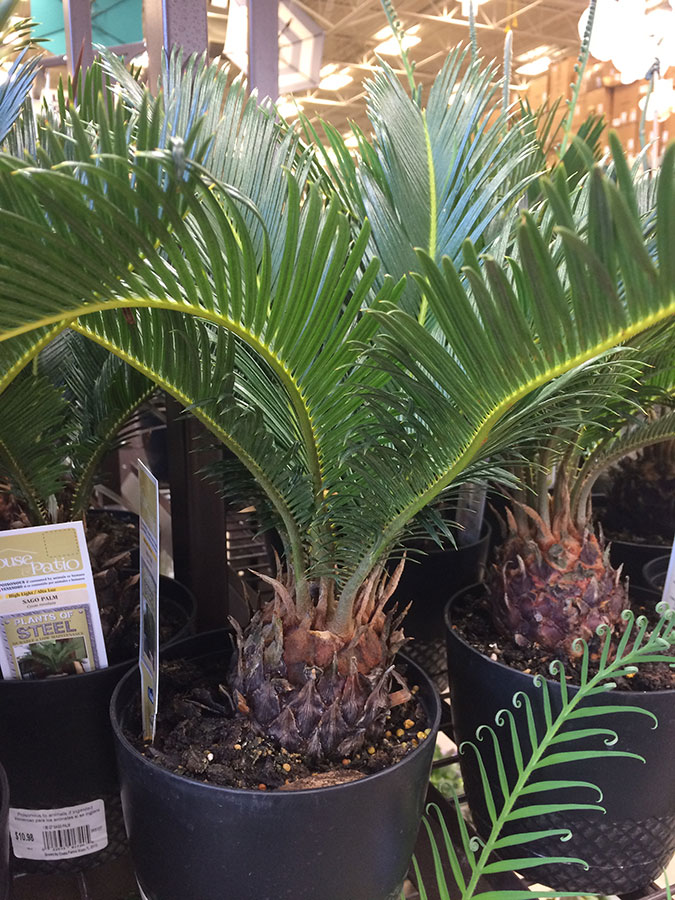
Sago palm (Cycas revoluta)
This is probably the one plant I will never have in my home. A friend’s small dog ate one sago palm leaf and died. It was horrible.
Sago palm is very toxic to dogs. Symptoms include vomiting, dark stools, liver failure, liver damage, diarrhea with blood, excessive drinking, jaundice – and even death.
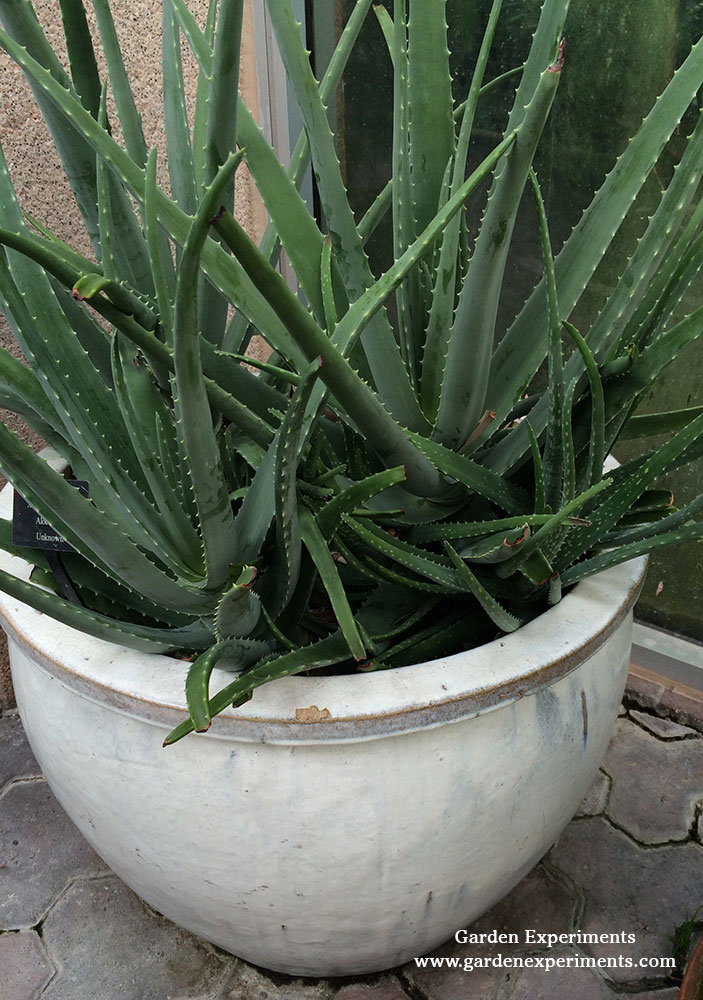
Aloe (Aloe spp.)
Aloes come in many shapes and sizes and are very common houseplants. These include Aloe vera, Aloe barbadensis, and others.
Aloe plants are poisonous to dogs. Symptoms include vomiting, lethargy, and diarrhea.
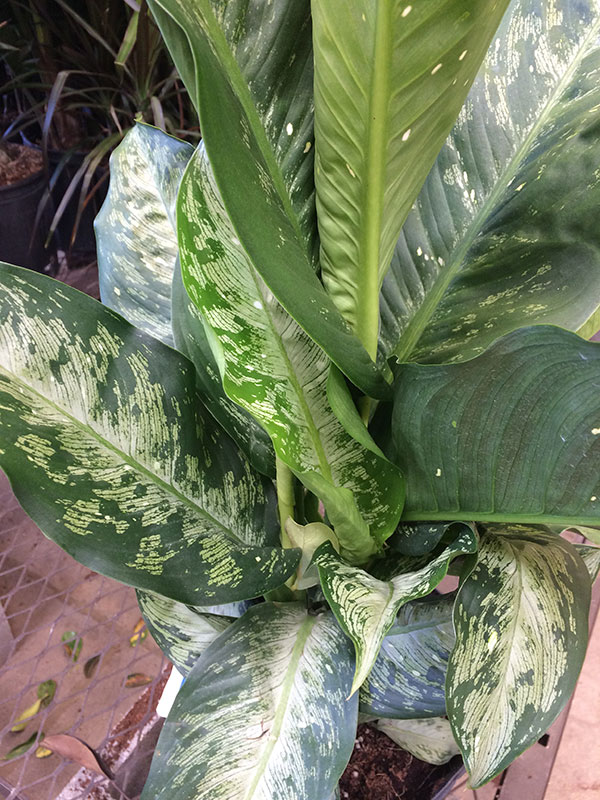
Dumb Cane (Dieffenbachia spp.)
Dumb cane is an easy-to-grow house plant that I have seen in many gardening and home improvement centers.
Dumb cane is toxic to dogs. Symptoms include pain and irritation/swelling of the mouth and tongue, lots of drooling, vomiting, and trouble swallowing.
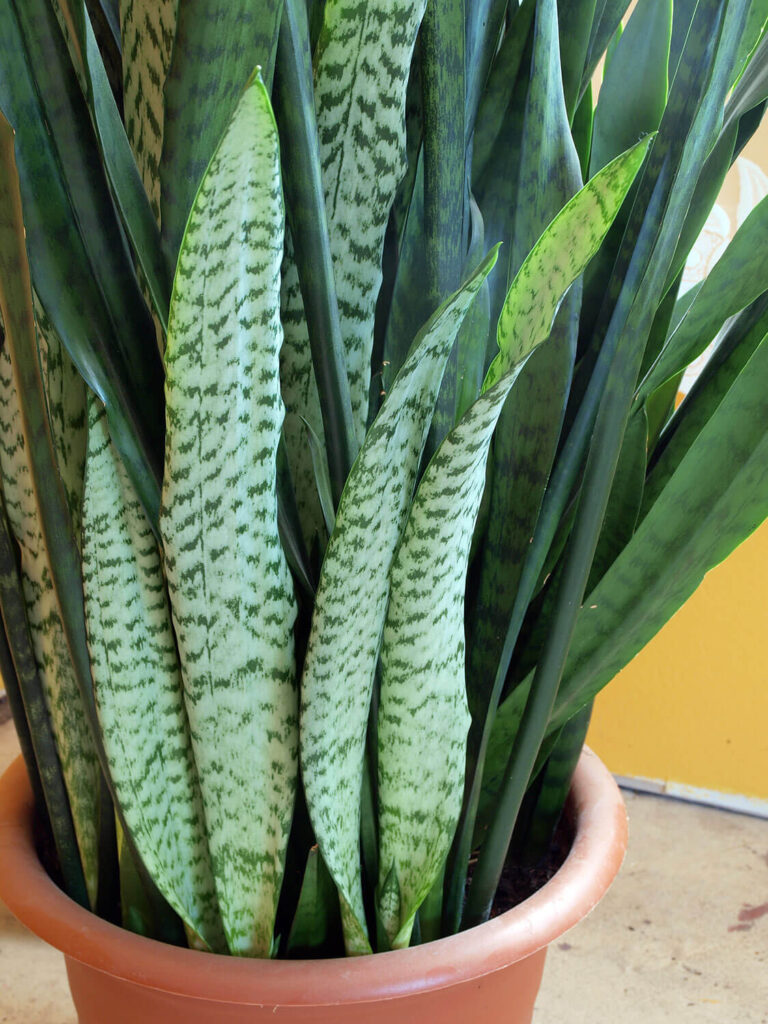
Mother-in-law’s tongue or Snake Plant (Dracaena trifasciata formerly Sansevieria trifasciata)
Snake plant is a very common houseplant since it can be grown in low light conditions. However, if your dog ingests this poisonous house plant, it may experience vomiting, diarrhea, and nausea.
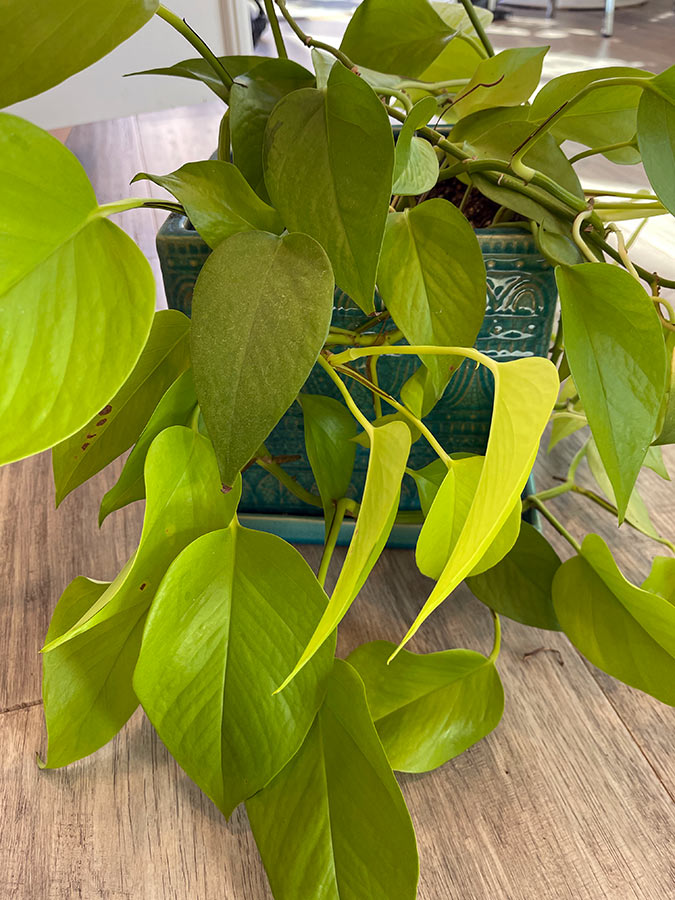
Devil’s Ivy (Epipremnum aureum)
This toxic house plant is also known as pothos, golden pothos, or ivy arum. One of the best things about this house plant is that it grows quickly and tolerates low light conditions.
However, golden pothos is another house plant that is poisonous to dogs. Symptoms of poisoning include irritation and pain of the mouth and tongue, drooling, vomiting, and difficulty swallowing.
This plant is kept on top of my kitchen cabinets – way out of the reach of my dogs.

Peace Lily (Spathiphyllum spp.)
Commonly found in garden centers or local home improvement stores as a house plant, peace lilies are also toxic to dogs.
Symptoms include mouth irritation, lots of drooling, and trouble with swallowing.
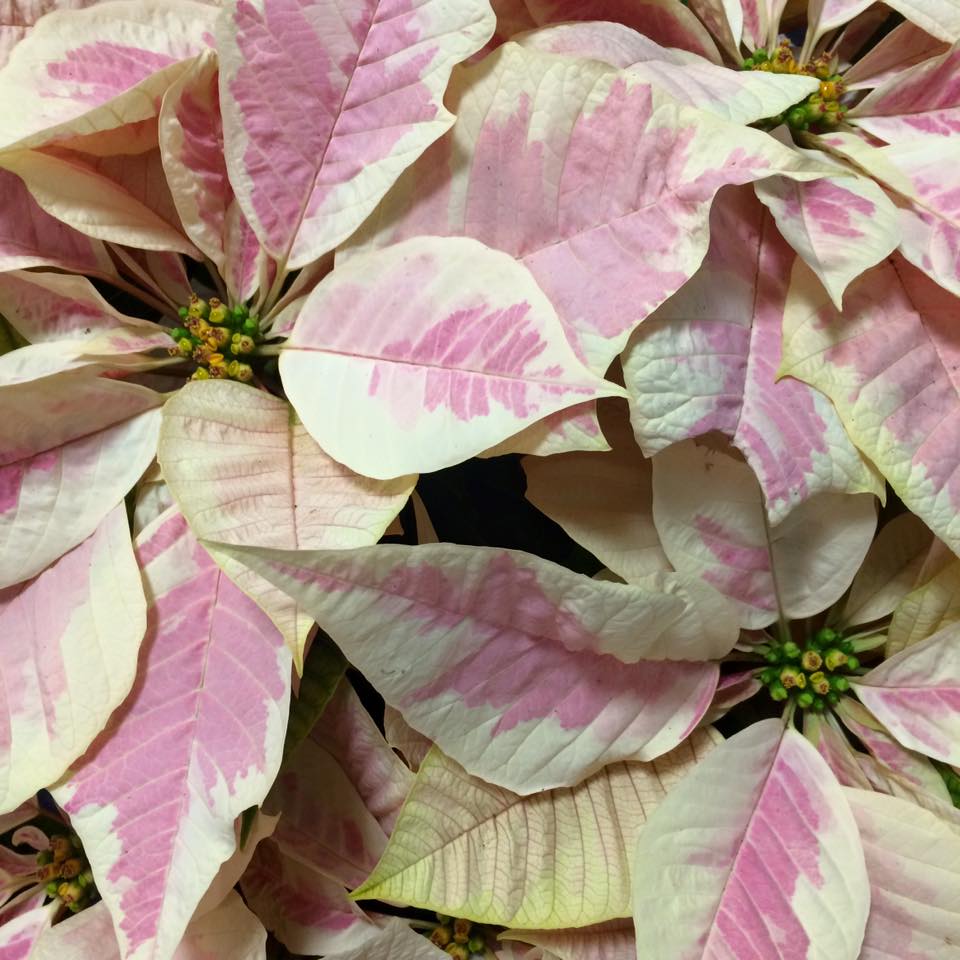
Poinsettia (Euphorbia pulcherrima)
Once Christmas comes around, you’ll see poinsettias all over the place. They are a common indoor plant in the winter used for holiday decoration.
Poinsettias are poisonous to dogs, and symptoms include mouth irritation, stomach pains, and even vomiting.
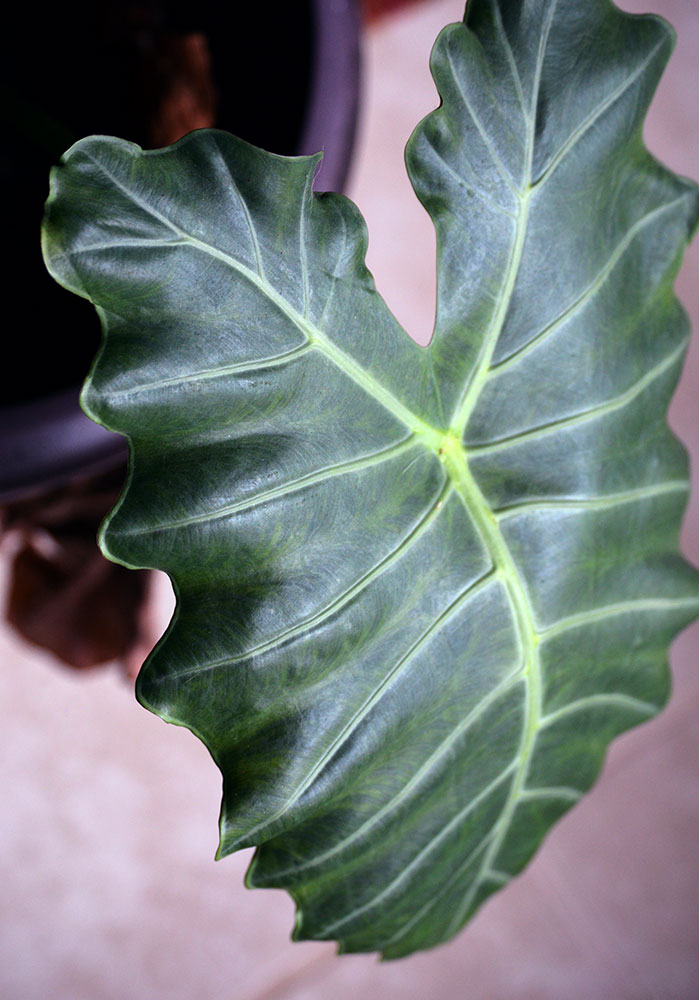
Elephant Ears (Alocasia spp)
Many elephant ears in the genus Alocasia are grown as house plants. This one is called Mayan Mask.
If a dog eats this poisonous plant, it can cause symptoms including mouth or tongue pain and swelling, excessive drooling, vomiting, sore mouth, and difficulty swallowing.
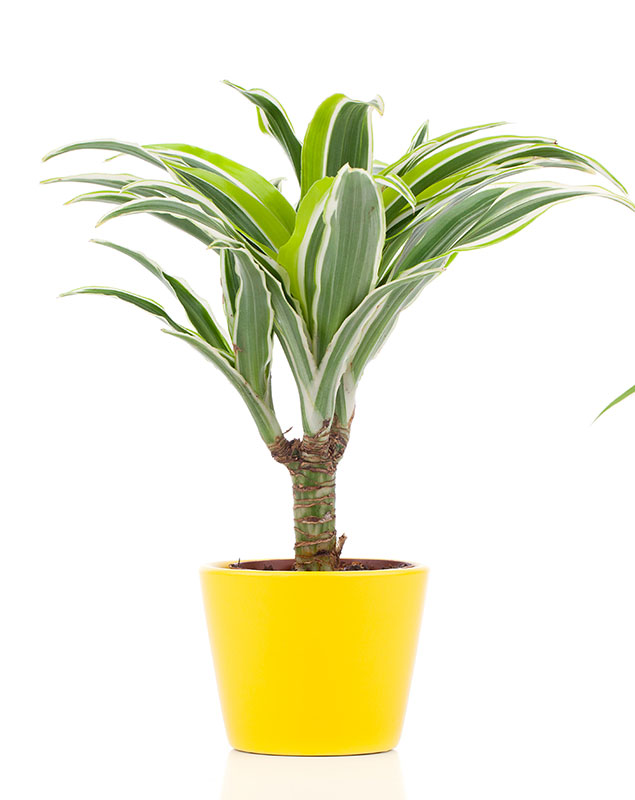
Corn Plant (Dracaena fragrans)
Corn plant is also known as dragon tree, ribbon plant, and dracaena. This plant is poisonous to dogs.
Symptoms of poisoning in dogs include vomiting, excessive saliva production, depression, and loss of appetite.
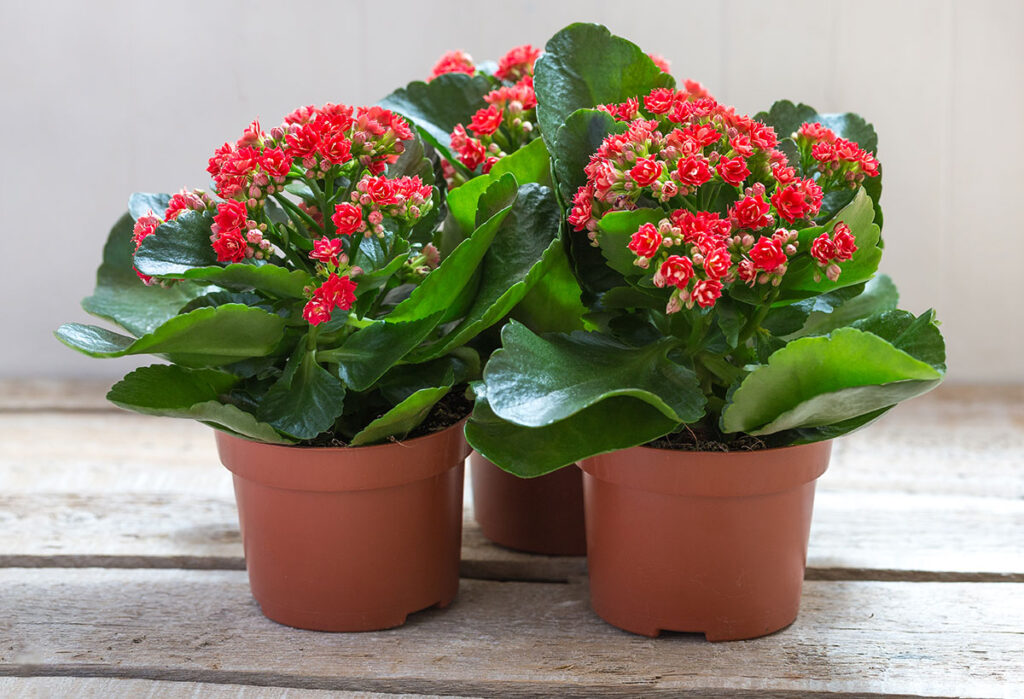
Kalanchoe (Kalanchoe spp.)
Another common florist plant, kalanchoe plants might be given as gifts, but they are poisonous to your dog. The flowers of this indoor plant can be pink, red, yellow, white, and other colors.
If your dog eats this plant, poisoning symptoms may include vomiting, diarrhea, and arrhythmia.
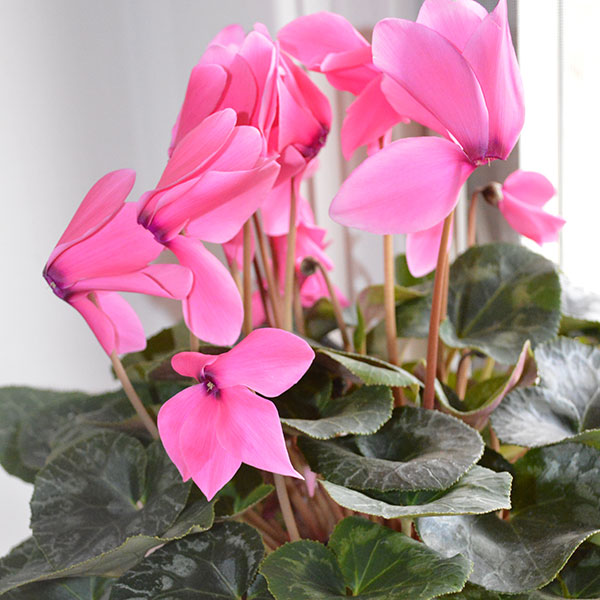
Cyclamen (Cyclamen spp.)
Cyclamen plants are a popular Valentine’s Day gift sold in garden centers and local stores. Unfortunately, if your dog eats cyclamen, it will get sick.
Symptoms of poisoning include vomiting, diarrhea, and excessive salivation. If your dog eats several tubers, it can lead to seizures and death.
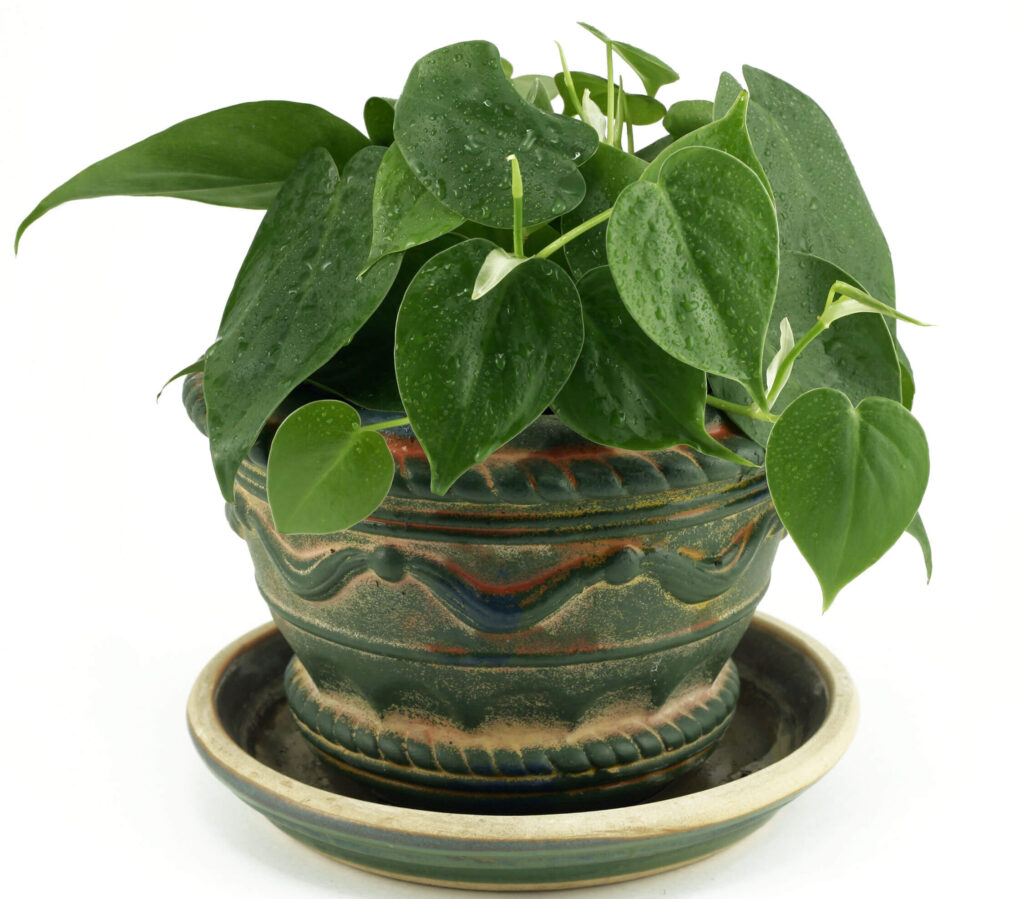
Heartleaf Philodendron (Philodendron oxycardium)
Another very common house plant is the philodendron. This indoor plant (photo adjacent) is also known as the fiddle-leaf philodendron and a few other common names.
Heartleaf philodendron is toxic to dogs and causes symptoms such as pain, swelling and irritation of the mouth and tongue, excessive drooling, vomiting, and problems swallowing.
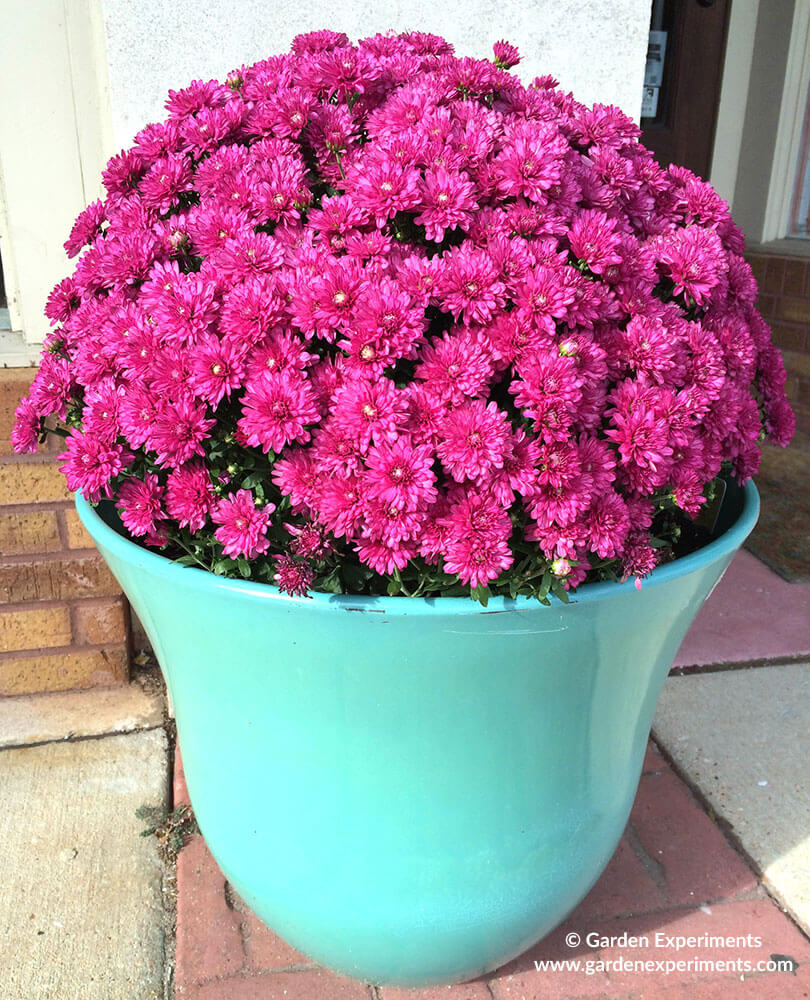
Mums and Chrysanthemums (Chrysanthemum spp.)
We see mums sold in garden centers and florist shops in the fall. Some of you might keep mums as house plants throughout the year.
Mums are poisonous to dogs if ingested. Symptoms include excessive salivation, skin irritation, vomiting, diarrhea, and a lack of coordination.
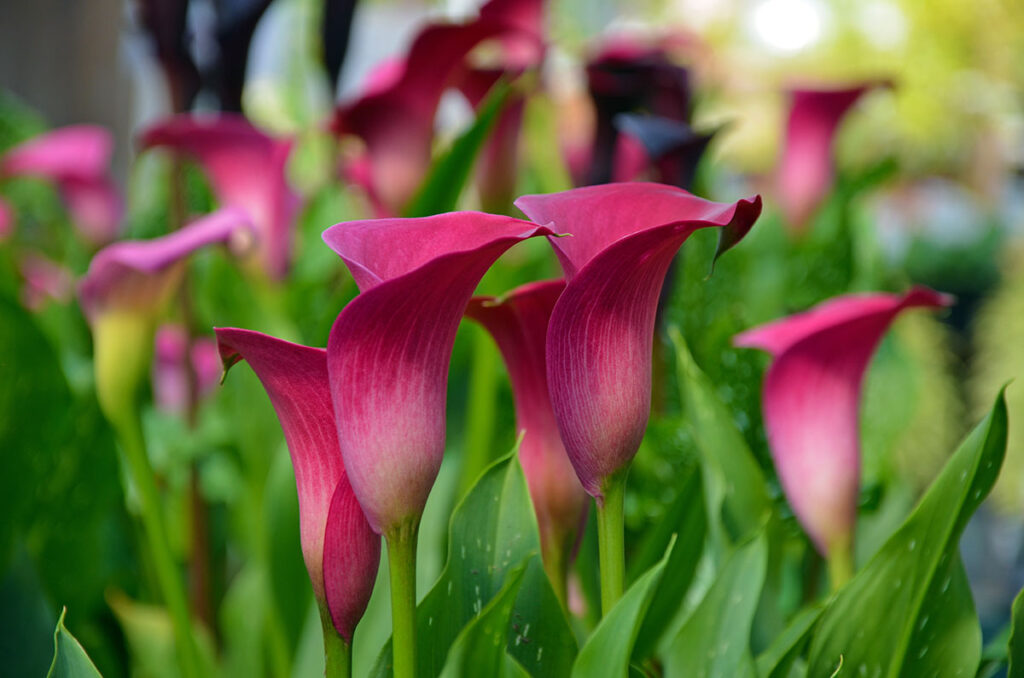
Calla Lily (Zantedeschia aethiopica)
Calla lilies come in all colors – pink, yellow, and white are standard. They are very ornamental and sold in florist shops too. So, you might have one growing in your house.
Keep this toxic houseplant away from your dog. If a dog eats a calla lily, it can be poisoned with symptoms that include pain and irritation of the mouth and tongue, excessive drooling, trouble swallowing, and vomiting.
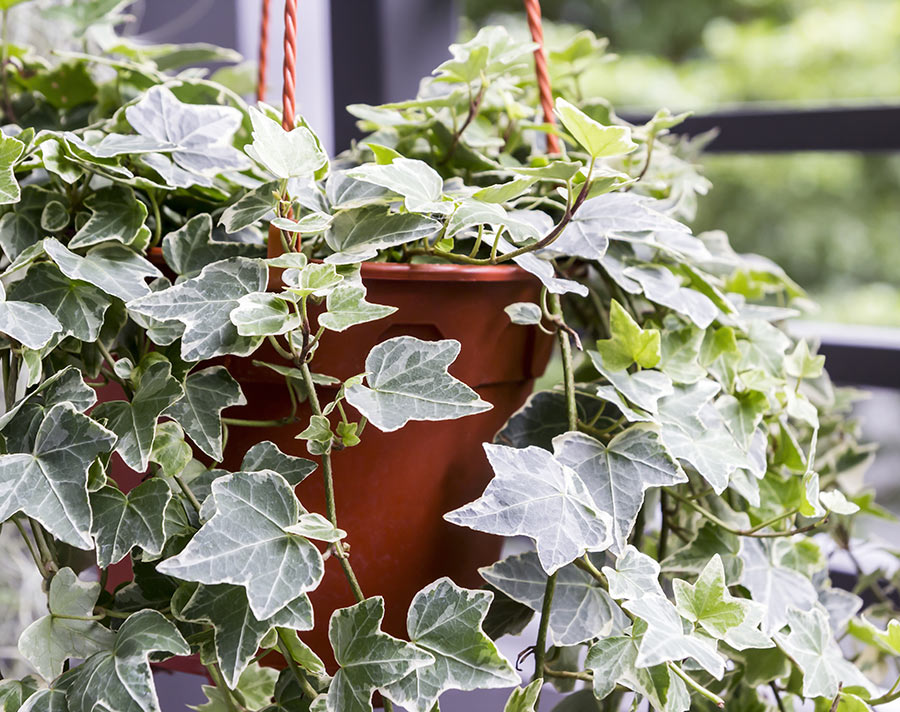
English ivy (Hedera helix)
Ivy is an easy-to-grow houseplant, and it spreads rapidly. Some variegated varieties are a bit smaller and used indoors.
Symptoms include vomiting, abdominal pain, excessive saliva production, and diarrhea.
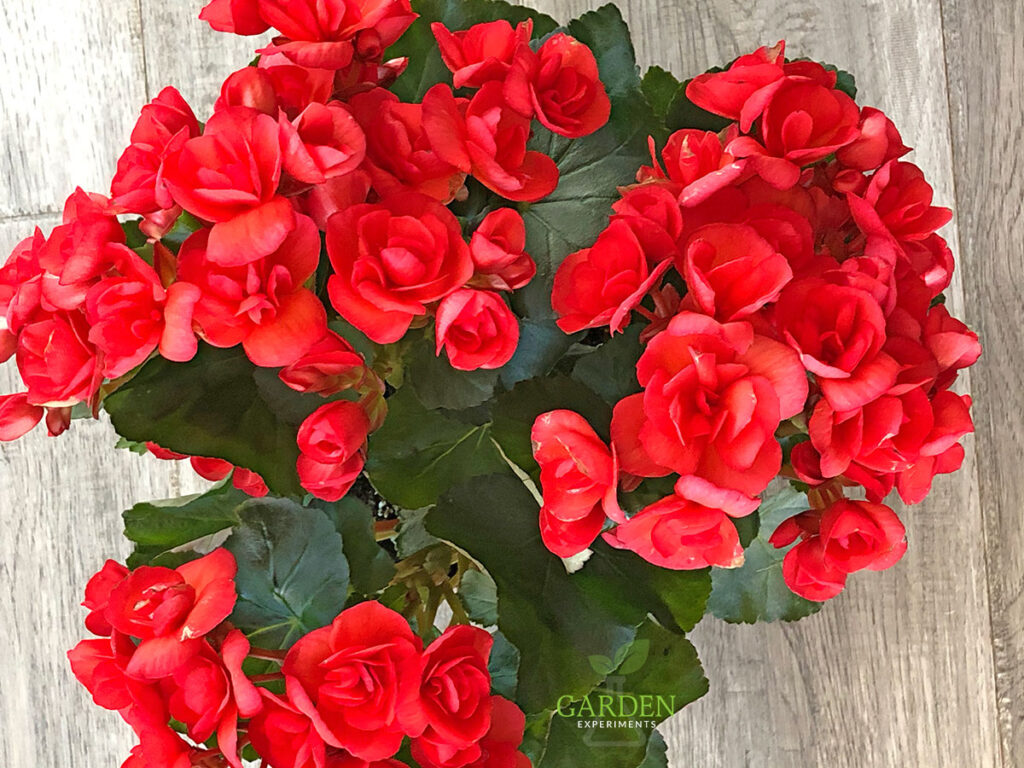
Begonia (Begonia spp.)
Many varieties of begonias are grown as houseplants – Rex begonia, angel wing begonia, wax begonia, and so many more!
However, begonia houseplants are poisonous to dogs. Symptoms include vomiting and producing lots of saliva.
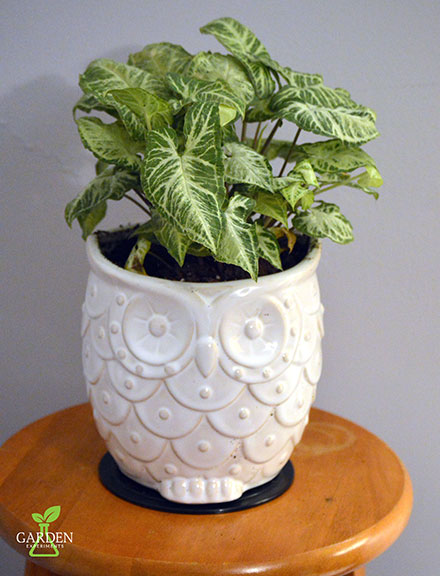
Arrowhead Vine (Syngonium podophyllum)
Also known as the goosefoot plant, arrowhead vines are a very common house plant and must be kept away from your dogs.
If your dog eats an arrowhead vine plant, symptoms of poisoning include swelling of the tongue and mouth, problems swallowing, vomiting, and lots of drooling.
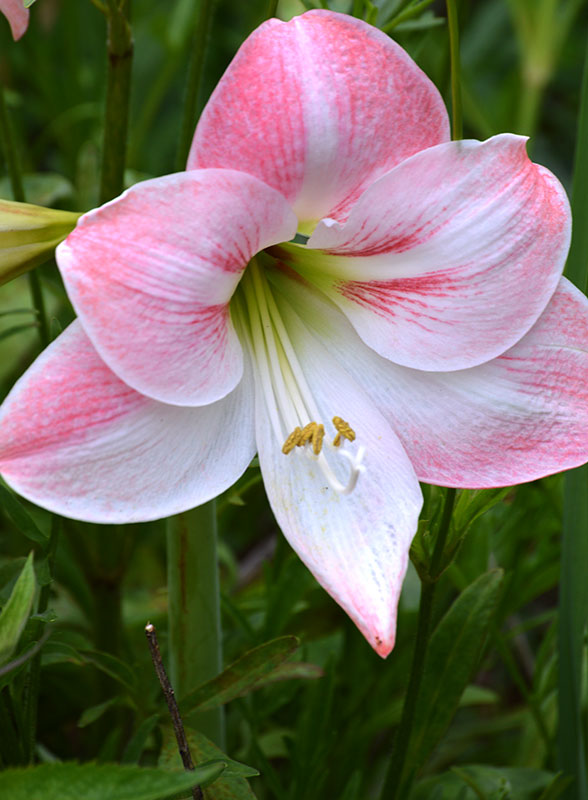
Amaryllis (Amaryllis spp.)
Amaryllis flower bulbs are often sold in the winter to be grown indoors. Other common names for this plant are naked ladies and belladonna lily.
Amaryllis bulbs are toxic to dogs. Poisoning symptoms include lethargy, vomiting, diarrhea, abdominal pain, excessive salivation, depression, and tremors.
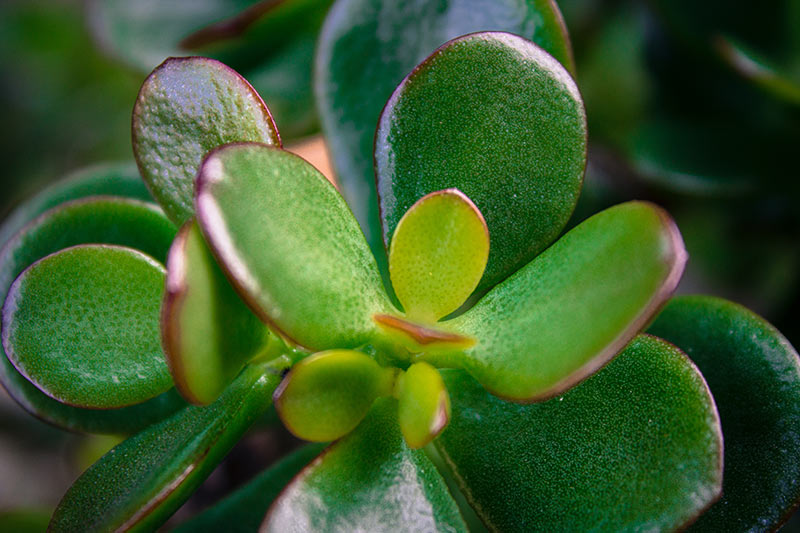
Jade Plant (Crassula argentea)
Jade plants are cool-looking and grow well as a houseplant, but they are toxic to dogs.
Symptoms of poisoning in dogs include vomiting, depression, and a lack of coordination.
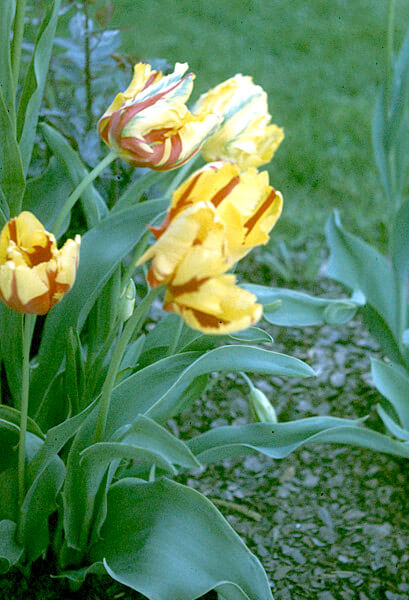
Tulips (Tulipa spp.)
You might buy some tulip flowers from your local grocery store or florist in the winter to bring a little color into your house, but this flowering house plant is toxic to your dog.
If your dog ingests the plant or bulb (the bulb is highest in toxicity), he/she might exhibit the following symptoms: vomiting, depression, diarrhea, or excessive salivation.
Complete List of Plants Poisonous to Dogs
This is not a complete list of all houseplants that are toxic to dogs or can make your dog sick. For a full list of all plants that are toxic to dogs – visit the ASPCA website.
